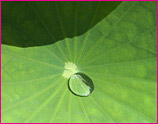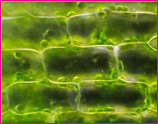Posted on January 12th, 2009 by ASEE

In this elementary school activity, students learn about biomimicry and how engineers often imitate nature in the design of innovative new products. They demonstrate their knowledge of biomimicry by practicing brainstorming and designing a new product based on what they know about animals and nature.
Read More
Filed under: Class Activities, Grades 6-8, Grades K-5 | 2 Comments »
Tags: Biomimicry, Grades 6-8, Grades K-5
Posted on December 1st, 2008 by ASEE
In this activity, late-elementary school students work in small groups to build a roller coaster with at least one loop and one jump, demonstrating how potential energy transforms into kinetic energy. Students observe the relationship of height to potential energy and the resulting kinetic energy.
Read More
Filed under: Class Activities, Grades K-5 | Comments Off on Class Activity: Build a Roller Coaster
Tags: Class Activities, forces and motion, friction, Grades 3-6, Grades K-5, kinetic energy, Mechanical engineering, roller coaster
Posted on July 15th, 2008 by ASEE
In this activity for grades 3-5, students learn about their heart rate and different ways it can be measured. Students construct a simple measurement device using clay and a toothpick, and then use this device to measure their heart rate under different circumstances. Students make predictions and record data on a worksheet.
Read More
Filed under: Class Activities, Grades K-5 | Comments Off on Class Activity: The Beat Goes On
Posted on April 15th, 2008 by ASEE
In this scenario-based activity, students design ways to either clean a water source or find a new water source, depending on given hypothetical family scenarios. They act as engineers to draw and write about what they could do to provide water to a community facing a water crisis. They learn basic steps of the engineering design process.
Read More
Filed under: Grades K-5, Lesson Plans | 1 Comment »
Tags: Clean Water, Grades 3-5, Water management
Posted on February 3rd, 2008 by ASEE
 Students learn a simple technique for quantifying the amount of photosynthesis that occurs in a given period of time, using a common water plant (Elodea). They can use this technique to compare the amounts of photosynthesis that occur under conditions of low and high light levels. Before the experiment, students come up with a well-worded hypothesis to be tested. After the experiment, students pool their data to get a large sample size, determine the measures of central tendency of the class data, then graph and interpret the results.
Students learn a simple technique for quantifying the amount of photosynthesis that occurs in a given period of time, using a common water plant (Elodea). They can use this technique to compare the amounts of photosynthesis that occur under conditions of low and high light levels. Before the experiment, students come up with a well-worded hypothesis to be tested. After the experiment, students pool their data to get a large sample size, determine the measures of central tendency of the class data, then graph and interpret the results.
Read More
Filed under: Grades 6-8, Grades K-5, Lesson Plans | Comments Off on Bubbling Plants
Posted on December 11th, 2007 by ASEE
Students learn about biomimicry and how engineers imitate nature in the design of innovative new products. They demonstrate their knowledge by practicing brainstorming and designing a new product based on what they know about animals and nature.
Read More
Filed under: Class Activities, Grades 6-8, Grades K-5, Grades K-5, Lesson Plans | Comments Off on Biomimicry: Natural Designs
Tags: Biomimicry, Design
Posted on November 27th, 2007 by ASEE
Students analyze international oil consumption and production data. They make several graphs to organize the data and draw conclusions about the overall use of oil in the world.
Read More
Filed under: Grades K-5, Grades K-5, Lesson Plans | Comments Off on Lesson: Oil and Energy Consumption
Tags: Class Activities, communications, Earth Science, Energy, Grades K-5, Lesson Plan, mining engineering, oil, petroleum engineering
Posted on November 7th, 2007 by ASEE
In exploring ways to use solar energy, students investigate the thermal energy storage capacities of different test materials to determine which to use in solar building design.
Read More
Filed under: Grades K-5, Lesson Plans | Comments Off on Lesson: Capturing the Sun’s Warmth
Tags: Lesson Plan, Solar Engineering
Posted on October 19th, 2007 by ASEE
Students learn about applied forces as they create pop-up-books through the art of paper engineering. They also learn the basic steps of the engineering design process.
Read More
Filed under: Grades 6-8, Grades K-5, Lesson Plans | 2 Comments »
Tags: Design










 Students learn a simple technique for quantifying the amount of photosynthesis that occurs in a given period of time, using a common water plant (Elodea). They can use this technique to compare the amounts of photosynthesis that occur under conditions of low and high light levels. Before the experiment, students come up with a well-worded hypothesis to be tested. After the experiment, students pool their data to get a large sample size, determine the measures of central tendency of the class data, then graph and interpret the results.
Students learn a simple technique for quantifying the amount of photosynthesis that occurs in a given period of time, using a common water plant (Elodea). They can use this technique to compare the amounts of photosynthesis that occur under conditions of low and high light levels. Before the experiment, students come up with a well-worded hypothesis to be tested. After the experiment, students pool their data to get a large sample size, determine the measures of central tendency of the class data, then graph and interpret the results.